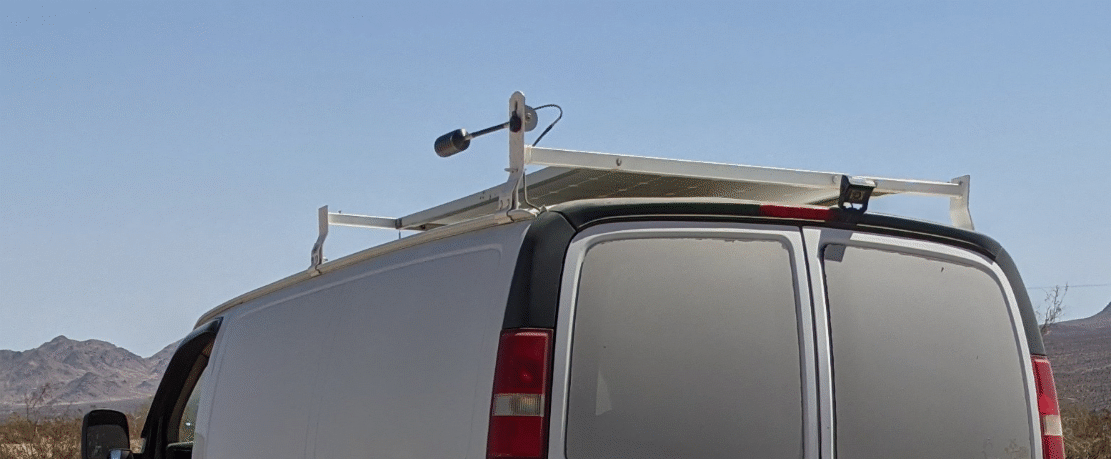
I’VE BEEN VERY SATISFIED with the weBoost Drive RV omnidirectional antenna I bought two years ago. And I’m even more satisfied with the folding mounting system I rigged up.
The weBoost Drive RV antenna comes with a couple of U-bolts. The idea is to clamp it to something like the ladder on the rear of an RV. I don’t have a ladder, but I do have a ladder rack holding my solar panel. It would be easy to drill some holes in the rack’s end plate and mount the supplied bracket with regular bolts. Or I could drill a hole down through the rack cross piece and forego the bracket. Either way, the antenna would be mounted upright and rather permanently. I see rigs like that all over the place.
But I Had An Idea
I knew I would be going places with low overhead clearances. Trees, rock outcroppings, car washes, ATM drive-throughs… What if I made it so the antenna could fold flat when not in use? The solution popped into my head. Sometimes my old man brain surprises me with a decent idea.
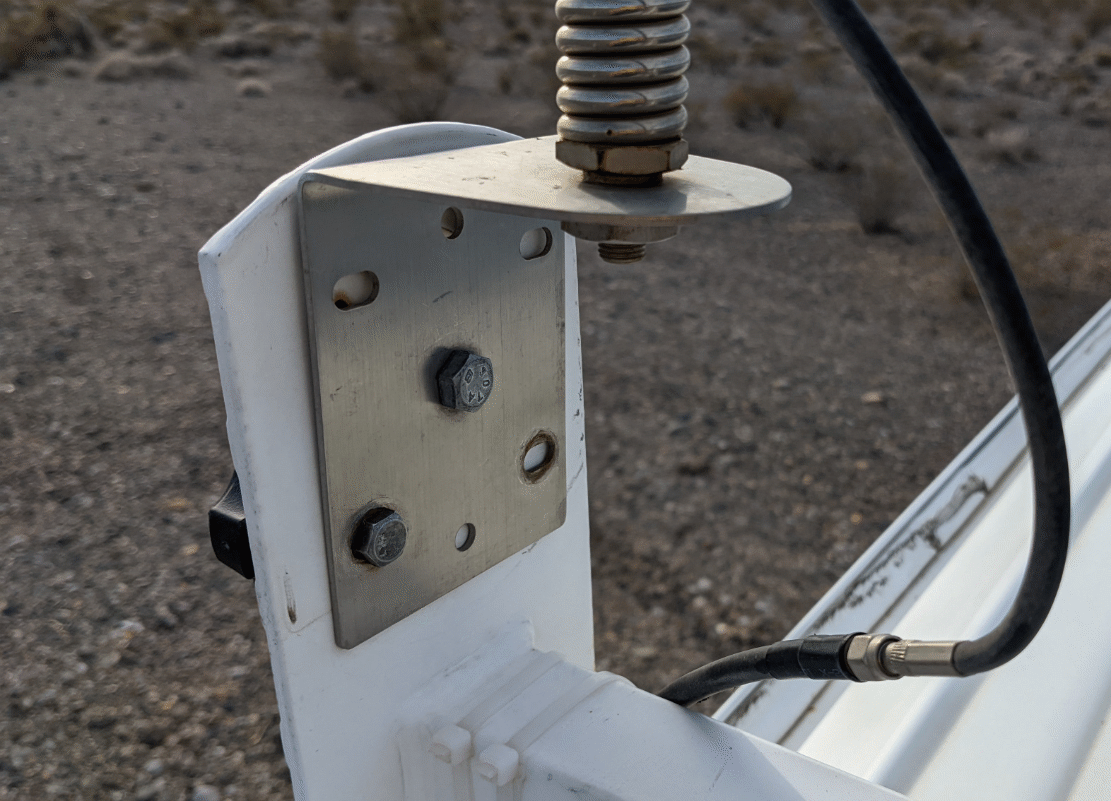
1. I found the center of the big L-bracket by drawing lines diagonally from hole to hole. That would be my pivot point.
2. I drilled a hole and a matching one in the ladder rack end plate.
3. I bolted the bracket to the end plate and marked the location of one of the existing bracket holes. I drilled that hole in the end plate.
4. While rummaging through my box of nuts and bolts I discovered a threaded knob I had picked up years ago while wandering through a hardware store. I didn’t know back then what I would use it for. It turned out to be this.
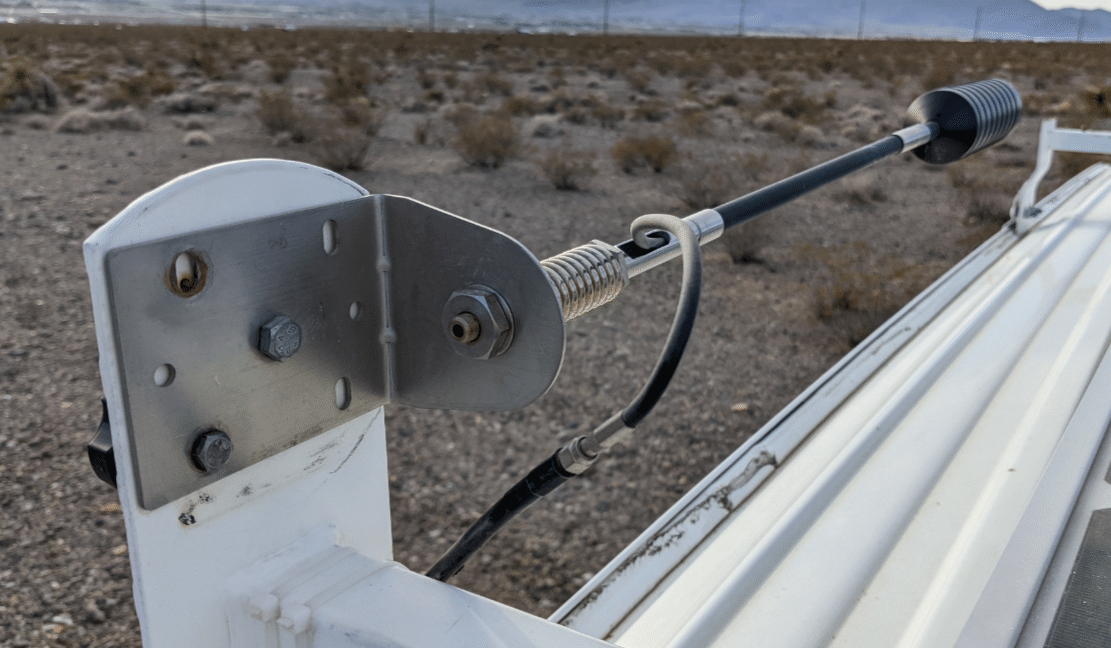
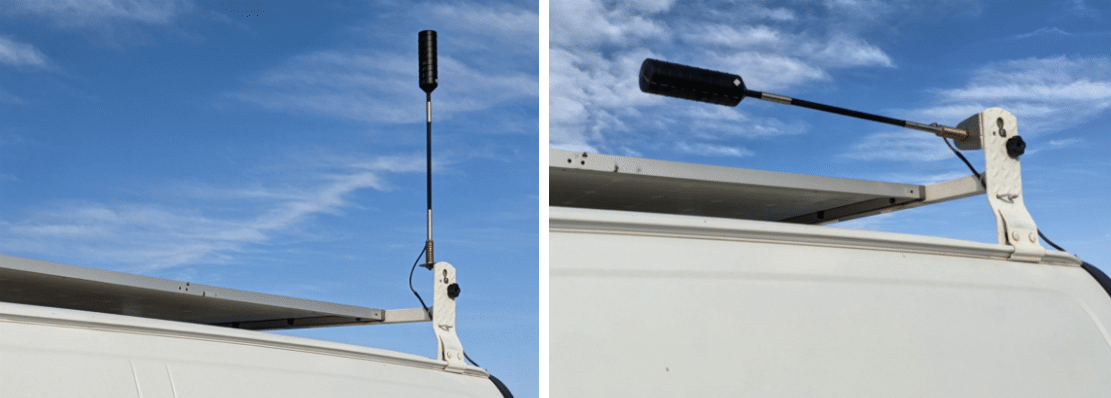
Now it’s a simple matter of standing in the rear doorway, unscrewing the knob, removing the bolt, either raising or lowering the antenna until one of the other existing holes in the bracket lines up with the hole in the end plate, then replacing the bolt and knob.
How Well Has It Worked?
I’ve put in a lot of miles since mounting the antenna and have had no problems—even when driving with the antenna up. Yes, those two bolts are secure enough.
After about a year of use, the omnidirectional cellular antenna has performed as well under most circumsances as the directional antenna it replaced. The directional antenna (shown below) had been a bit inconvenient to use.
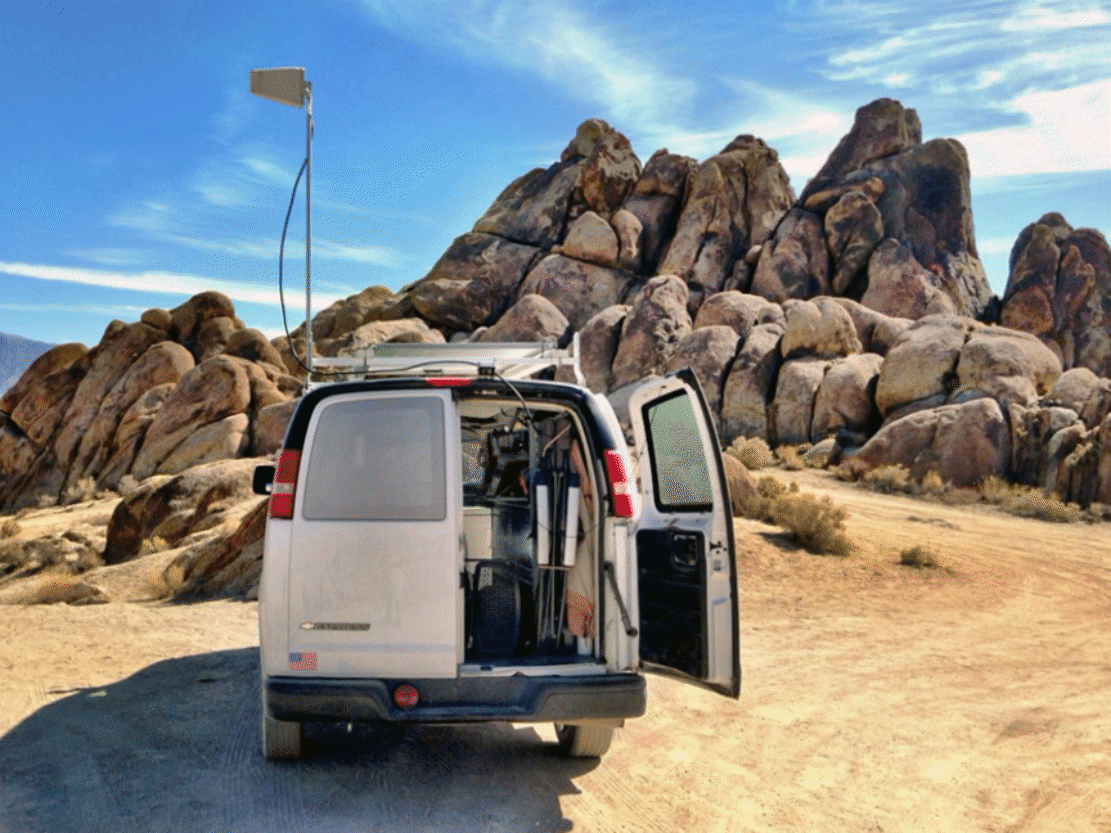
I would need to unpack it from the back of the van, mount the mast, run the cable, then aim the antenna this way and that, checking the hot spot resting in the weBoost Sleek cellular booster inside to see whether the signal had improved. And since I tend to switch locations frequently, it meant I’d have to pack it all back up, then maybe unpack it again at the next boondocking site.
And in winter, when I often reposition my van a few times a day to maximize solar exposure, I would then need to re-aim the directional antenna. So much work.
Necessity might be the mother of invention, but I believe laziness is its father. “I bet I can find an easier way to do that.”

A very ingenious idea, I will try that when I get all of my Rv Together.
You could use large cotter pins, the type with a closure, too. Though they wouldn’t be an exact fit and might cause wind-rattle, but they’d be pretty fast to take out.
Lack of rattle is one reason I like the bolt and knob. Besides, it was what I already had.
Great idea! We used a twist lock extension handle and coiled water house as a “nye coil” conduit. This give us protected travel mode and about 8′ camp mode. I wish we had tried WeBoost our cheaper brand only gets us 30 dB at best.
Al, if I may ask, what cellular service are you using?
Verizon and T-Mobile